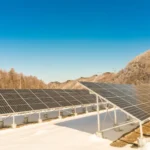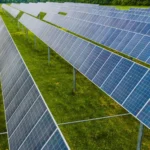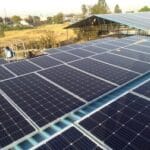UP Discoms Propose 9.21% Electricity Tariff Hike for 2015-16
UP Discoms Propose 9.21% Electricity Tariff Hike for 2015-16
Uttar Pradesh Discoms have filed the petition on 2nd February 2015 for the tariff increase for the year 2015-16 which is now being heard by UPERC. The Discoms have proposed a hike in the UP electricity tariff by 9.21% though the tariff required to meet the full revenue gap is 19.59%. The biggest percentage increase inUP electricity tariff has been proposed for the domestic consumers which can go up to 19% for the consumers in the lowest consumption slab.
The variable tariff in Uttar Pradesh consists of energy charges, regulatory surcharge and taxes as shown below. The regulatory surcharge and tax are together calculated as 10.22% of energy charges and demand charges. As such any increase in energy and demand charges will lead to increase in these charges also.
Domestic Consumers:
The variable charges to be paid by a domestic urban consumer are as follows –
| Units consumed (Units or kWh) | Energy Charges (Rs per kWh) | Tax (5%) | Regulatory Surcharge (5.22%) | Variable Charges (Rs per kWh) | |
| Metered Domestic Consumer | 600 | 5.63 | 0.28 | 0.29 | 6.20 |
The benefit of telescopic UP electricity tariff i.e. the lower tariff for lower consumption slab is available to all the consumers in the state unlike in neighboring Haryana state.
Commercial Loads:
The small commercial consumers have a telescopic UP electricity tariff with any units consumed over 1000 kWh attracting the Energy charges of Rs 7.1 per kWh. The variable tariffs for these consumers having a consumption of 1000 units and 1500 units per Month are as below.
| Units consumed (Units or kWh) | Energy Charges (Rs per kWh) | Tax (5%) | Regulatory Surcharge (5.22%) | Variable Charges (Rs per kWh) | |
| NON DOMESTIC LIGHT, FAN AND POWER | 1000 | 6.64 | 0.33 | 0.35 | 7.31 |
| 1500 | 6.79 | 0.34 | 0.35 | 7.48 | |
| Private Advertising / Sign Posts / Sign Boards / Glow Signs / Flex | 14.00 | 0.70 | 0.73 | 15.43 |
As shown above, the variable tariff for the advertising sign boards is the highest in the state.
However, for the commercial loads over and 75 KW, the charges are significantly higher as shown below. These consumers are charged per kVAh energy tariff. In the table below, the energy charges are converted to per kWh using a power factor of 0.9.
| Commercial Loads / Private Institutions / Non domestic bulk power consumer with contracted load 75 kW & above | Energy Charges (Rs per kWh) | Tax (5%) | Regulatory Surcharge (5.22%) | Variable Charges (Rs per kWh) |
| Commercial Loads / Private Institutions / Non domestic bulk power consumer with contracted load 75 kW & above | Energy Charges (Rs per kWh) | Tax (5%) | Regulatory Surcharge (5.22%) | Variable Charges (Rs per kWh) |
| At 11 kV | 7.56 | 0.38 | 0.39 | 8.33 |
| At 33 kV & above | 7.33 | 0.37 | 0.38 | 8.08 |
| Public Institutions, Registered Societies, Residential Colonies / Townships, Residential Multi-Storied Buildings including Residential Multi-Storied Buildings with contracted load 75 kW & above | ||||
| At 11 kV | 7.33 | 0.37 | 0.38 | 8.08 |
| At 33 kV & above | 7.11 | 0.36 | 0.37 | 7.84 |
Industries:
For the small and medium size industries, the variable charges vary from Rs 6.83 to Rs 7.49 per kWh as shown in the table below.
| SMALL AND MEDIUM POWER (<75 KW) | Energy Charges (Rs per kWh) | Tax (5%) | Regulatory Surcharge (5.22%) | Variable Charges (Rs per kWh) |
| 0 – 1000 kWh / month | 6.20 | 0.31 | 0.32 | 6.83 |
| Above 1000 kWh / month | 6.80 | 0.34 | 0.35 | 7.49 |
For large and heavy industries, the variable charges are again specific in per kVAh terms which are converted in the table below using a PF of 0.9. The UP electricity tariffs are the highest for the industries connected at 11 KV voltages as shown below.
| LARGE AND HEAVY POWER | Energy Charges (Rs per kWh) | Tax (5%) | Regulatory Surcharge (5.22%) | Variable Charges (Rs per kWh) |
| For supply at 11 kV | 7.00 | 0.35 | 0.37 | 7.72 |
| For supply above 11 kV and up to & including 66 kV | 6.67 | 0.33 | 0.35 | 7.35 |
| For supply above 66 kV and up to & including 132 kV | 6.44 | 0.32 | 0.34 | 7.10 |
| For supply above 132 kV | 6.22 | 0.31 | 0.32 | 6.86 |
In fact the Discom tariffs in Uttar Pradesh are on the lower side vis-à-vis that in the other neighbouring states. However due to the year round power cuts, the consumers end up paying much more as they have to constantly invest in the Investors and the Diesel Generator sets.
Suggested Articles

SECI Sets Record in Renewable Energy Trading, Surpasses ₹100 Billion
SECI achieves record renewable power trading revenue surpassing ₹100 billion, marking a milestone in India’s clean energy growth and solar market expansion.

Latest 100 kW Solar Plant Price in Delhi | Subsidy, ROI & Payback
Thinking about installing a 100 kW solar system in Delhi? This 2025 guide breaks down the 100 kW Solar Plant Cost in Delhi, explaining price per watt, total investment, energy generation, and key benefits for industries and businesses.

1 MW Solar Power Plant Cost in Madhya Pradesh | A Complete Industrial Solar Guide
A detailed guide on the cost of setting up a 1 MW solar power plant in Madhya Pradesh. Learn about pricing, EPC components, land requirements, subsidies, and expected payback for commercial and industrial users.

Poor vs Good Solar Installation: Key Differences Explained
A solar system’s performance depends heavily on installation quality. This blog explains the clear differences between a poor and good solar installation — from wiring practices and panel alignment to mounting structures and system safety — helping you make an informed choice and ensure long-term efficiency.

Solar Power Set to Overtake Coal as World’s Largest Energy Source in Four Years
Solar power has come a long way in the past decade, moving from being an also-ran to one of the major players in the global energy race. According to the International Energy Agency, next year, solar photovoltaic capacity will surpass hydropower, followed by gas-fired generation in three years and coal in four years.

India’s Renewable Energy Revolution: The Role of Agrivoltaics
Agrivoltaics, the integration of solar panels with agricultural land, is emerging as a key driver in India’s renewable energy revolution. This blog explains how agrivoltaics supports sustainable farming, increases land efficiency, and contributes to clean energy production, helping India meet its solar energy targets while boosting rural economies.

Complete Guide to Rooftop Solar Components for Industries
A rooftop solar system for factories typically includes solar panels, inverters, mounting structures, wiring, and monitoring systems. Additional components like net meters and energy storage may also be installed to optimize energy usage and track performance

Industrial Solar Plants with Diesel Generator Backup: What You Need to Know
Discover how industries can efficiently run rooftop solar plants alongside diesel generators (DG). Learn the benefits, setup tips, and hybrid system strategies to ensure uninterrupted power and maximize energy savings.

1 MW Solar Power Plant Cost in Rajasthan: A Complete Guide
A detailed guide on the cost of setting up a 1 MW solar power plant in Rajasthan. Learn about pricing, EPC components, land needs, subsidies, and expected payback for commercial and industrial users.

Solar Rooftop Projects: Benefits of Intentional Islanding for Power Backup
Discover the role of intentional islanding in solar rooftop projects. Ensure continuous power supply, system safety, and reliable energy even during grid failures.